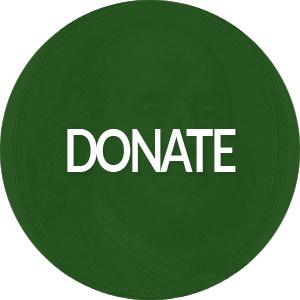ABOUT
On December 6, 2022, The Black Restitution Initiative, Inc. (BRI), was incorporated as a Nonprofit organization in the State of New York, by its founder Marc A. Stephens. BRI is governed by the adopted bylaws defined in “Bylaws of The Black Restitution Initiative, Inc”. The organization’s headquarters is located in midtown Manhattan on 42nd Street. BRI, received it’s IRS 501(c)(3) tax exempt status on July 28, 2023.
1. THE NEED
The Black Restitution Initiative, Inc., is needed in order to reduce poverty around the United States of America, within the black community, by using modern technology.
2. THE MISSION
The Black Restitution Initiative, Inc., mission is to Eliminate Poverty, the Homework Gap, America's Digital Divide, and the Racial Wealth Gap by creating online revenue for low-income individuals living below the poverty line. The Federal poverty level is $14,580, 17 million children do not have computers at home, 28.2 million households do not have internet, the wealth of white families is $186,000 vs $23,000 for blacks. We create websites that generate $136,000 for individuals living in poverty.
3. THE PROBLEM
The main causes of poverty within the black community is mostly due to racism and discrimination in the workforce, and not having access to computers and high speed internet. Poverty causes black households to suffer in health and prosperity due to lack of income and resources.
It is no secret that legislation continues to pass in order to keep the black population in poverty. In 2010, the Supreme Court of the United States stated in their opinion how legislation is passed to ‘intentionally’ violate the Common Law and Constitutional Rights of black citizens, “[S]ome States formally prohibited blacks from possessing firearms. Others enacted legislation prohibiting blacks from carrying firearms without a license, a restriction not imposed on whites", McDonald v. City of Chicago, Ill., 130 S. Ct. 3020 — Supreme Court 2010 at 3082”. “[O]rganized terrorism like that perpetuated by Tillman and his cohorts proliferated in the absence of federal enforcement of constitutional rights. Militias such as the Ku Klux Klan, the Knights of the White Camellia, the White Brotherhood, the Pale Faces, and the '76 Association spread terror among blacks and white Republicans by breaking up Republican meetings, threatening political leaders, and whipping black militiamen. These groups raped, murdered, lynched, and robbed as a means of intimidating, and instilling pervasive fear in, those whom they despised”, McDonald v. City of Chicago, Ill., 561 US 742 - Supreme Court 2010 at 3087.
Today, you can check recent headlines of Gun Control Laws still being enacted, which were only created for black people. An article by Fox News titled, “New Jersey governor signs new gun law, drawing lawsuit from the NRA”, details how a new law puts tight restrictions on where concealed carry is allowed in New Jersey.[1] The States are still passing these racist and unconstitutional laws despite the fact the Supreme Court ruled in 2008, 2010, and 2022 that, “[T]he state cannot “enact any gun control law” that they deem to be reasonable. Time and again, however, those pleas failed. McDonald v. City of Chicago, Ill., 130 S. Ct. 3020 - Supreme Court 2010 at 3046. “[T]he State cannot interfere with the right of the citizen to keep and bear arms. The right to keep and bear arms is included in the fourteenth amendment, under `privileges and immunities.'" McDonald v. City of Chicago, Ill.,130 S. Ct. 3020, at 3077-3083.
The main reason why, white racist, enacted gun control laws, is because without firearms, black citizens could not protect their assets, property, and acres of land from being stolen, which lead to ‘decades’ of black citizens living in poverty.
The racism within the United States statutes and codes of the past including “Jim Crow Laws” and “The Black Codes”, are still in effect today and has created a devastating effect.
These racist laws have created three phenomenons in the schools, and in black households around the United States called the “Homework Gap”, the “America’s Digital Divide”, and the “Racial Wealth Gap”.
4. THE HOMEWORK GAP - Children with no computers or internet at Home.
The disparity in online access is also apparent in what has been called the “homework gap” – the gap between school-age children who have access to high-speed internet at home and those who don’t. According to a study conducted by the ‘Population Reference Bureau’, children of color are more likely to lack computers and high-speed internet at home.[2] As of June 2022, an article by Education Week titled, “The ‘Homework Gap’ Persists”, discuss nearly 17 million school children lack internet access at home, creating a nationwide Homework Gap that left unsolved could be become an opportunity gap.[3]
5. AMERICA’S DIGITAL DIVIDE - Black Households with No Computers or High-Speed Internet Access at Home.
The digital divide has been a central topic in tech circles for decades. According to a Pew Research Center analysis, 13% of adults with household incomes below $30,000 a year do not have access to computers, smart-phones, or internet access. According to a 2019 Pew Report, “America’s Digital Divide,” 21 million Americans didn’t have access to high-speed Internet service. Black, Hispanic, and low-income families have been hit hardest by digital inequity.[4] Only 49% of African Americans and 51% of Hispanics have high-speed internet at home, as compared with 66% of Caucasians.[5]
As of early 2021, 27% of adults living in households earning less than $30,000 a year are smartphone-only internet users – meaning they own a smartphone but do not have broadband internet at home.[6]
28.2 million households in the United States do not have high-speed broadband
In 2022, according to the non-profit ‘Education Super Highway’, approximately 28.2 million of 122.8 million households in the United States do not have high-speed broadband.[7] According to Reviews.org, that's equal to the total number of households in Alaska, Arizona, California, Colorado, Hawaii, Idaho, Kansas, Montana, Nevada, New Mexico, Oregon, Utah, and Washington combined. Another 265,331 households still have only dial-up connectivity, if you can believe it. That's the technology we used back in the 1990s. While Utah (84.8%), Colorado (84.7%), and California (83.7%) have the highest rate of connected households, Southern states including Mississippi (60.1%), Arkansas (64.5%), and Alabama (68.1%), number among the lowest rates. Reviews.org narrowed down to Issaquena County, Mississippi (19.5%), Monroe County, Arkansas (34.7%), and Escambia County, Alabama (30.7%) as the least-connected counties in the least-connected states.
The main issues are digital illiteracy, low overall literacy, lack of motivation to use technology, lack of infrastructure for large rural populations, and the inability for many in those populations to afford modern internet plans. Since Internet Service Providers (ISPs) typically follow the money, they tend to ignore rural areas with poor populations, which leads to large swaths of Americans being forced to go without. [8]
The Federal Communications Commission (FCC) assistance of providing “Emergency Broadband Benefit” and “Affordable Connectivity Program” are temporary. [9]
6. THE RACIAL WEALTH GAP
The racial wealth gap, which looks at a person’s total net worth, is much wider than the gap between annual incomes, and it has gotten even wider since the Great Recession, when black citizens were hit the hardest. Researchers at the Federal Reserve Bank of St. Louis found that the median white family had $184,000 in wealth compared to just $23,000 for the median Black families. This gap will likely have lasting ramifications. If current public policies stay the same, it will take a staggering 228 years for black families to accumulate the same amount of wealth that white families have today.
7. ELIMINATING POVERTY
39 Million Americans live in poverty. The Black Restitution Initiative, Inc., will be forming strategic partnerships with private foundations, domain and website hosting companies, computer manufacturers, discounted computer retailers, local government, and banks to assist those with low-income to obtain computers and internet access in order to generate an online income of $136,000 per year.
1.5 Million New Yorker’s live in poverty
The Black Restitution Initiative, Inc. will start it’s mission in New York City. In New York City, according to Welfareinfo.org, as seen in the chart below, a total of 1.5 million people live in poverty. In New York County (Manhattan), New York, an estimated 264,671 of 1,530,687 people live in poverty. In Bronx County, New York, an estimated 367,507 of 1,390,140 people live in poverty. In Kings County (Brooklyn), New York, an estimated 500,678 of 2,612,435 people live in poverty. In Queens County, New York, an estimated 309,902 of 2,303,829 people live in poverty. In Richmond County (Staten Island), New York, an estimated 56,491 of 489,290 people live in poverty.
On December 6, 2022, The Black Restitution Initiative, Inc. (BRI), was incorporated as a Nonprofit organization in the State of New York, by its founder Marc A. Stephens. BRI is governed by the adopted bylaws defined in “Bylaws of The Black Restitution Initiative, Inc”. The organization’s headquarters is located in midtown Manhattan on 42nd Street. BRI, received it’s IRS 501(c)(3) tax exempt status on July 28, 2023.
1. THE NEED
The Black Restitution Initiative, Inc., is needed in order to reduce poverty around the United States of America, within the black community, by using modern technology.
2. THE MISSION
The Black Restitution Initiative, Inc., mission is to Eliminate Poverty, the Homework Gap, America's Digital Divide, and the Racial Wealth Gap by creating online revenue for low-income individuals living below the poverty line. The Federal poverty level is $14,580, 17 million children do not have computers at home, 28.2 million households do not have internet, the wealth of white families is $186,000 vs $23,000 for blacks. We create websites that generate $136,000 for individuals living in poverty.
3. THE PROBLEM
The main causes of poverty within the black community is mostly due to racism and discrimination in the workforce, and not having access to computers and high speed internet. Poverty causes black households to suffer in health and prosperity due to lack of income and resources.
It is no secret that legislation continues to pass in order to keep the black population in poverty. In 2010, the Supreme Court of the United States stated in their opinion how legislation is passed to ‘intentionally’ violate the Common Law and Constitutional Rights of black citizens, “[S]ome States formally prohibited blacks from possessing firearms. Others enacted legislation prohibiting blacks from carrying firearms without a license, a restriction not imposed on whites", McDonald v. City of Chicago, Ill., 130 S. Ct. 3020 — Supreme Court 2010 at 3082”. “[O]rganized terrorism like that perpetuated by Tillman and his cohorts proliferated in the absence of federal enforcement of constitutional rights. Militias such as the Ku Klux Klan, the Knights of the White Camellia, the White Brotherhood, the Pale Faces, and the '76 Association spread terror among blacks and white Republicans by breaking up Republican meetings, threatening political leaders, and whipping black militiamen. These groups raped, murdered, lynched, and robbed as a means of intimidating, and instilling pervasive fear in, those whom they despised”, McDonald v. City of Chicago, Ill., 561 US 742 - Supreme Court 2010 at 3087.
Today, you can check recent headlines of Gun Control Laws still being enacted, which were only created for black people. An article by Fox News titled, “New Jersey governor signs new gun law, drawing lawsuit from the NRA”, details how a new law puts tight restrictions on where concealed carry is allowed in New Jersey.[1] The States are still passing these racist and unconstitutional laws despite the fact the Supreme Court ruled in 2008, 2010, and 2022 that, “[T]he state cannot “enact any gun control law” that they deem to be reasonable. Time and again, however, those pleas failed. McDonald v. City of Chicago, Ill., 130 S. Ct. 3020 - Supreme Court 2010 at 3046. “[T]he State cannot interfere with the right of the citizen to keep and bear arms. The right to keep and bear arms is included in the fourteenth amendment, under `privileges and immunities.'" McDonald v. City of Chicago, Ill.,130 S. Ct. 3020, at 3077-3083.
The main reason why, white racist, enacted gun control laws, is because without firearms, black citizens could not protect their assets, property, and acres of land from being stolen, which lead to ‘decades’ of black citizens living in poverty.
The racism within the United States statutes and codes of the past including “Jim Crow Laws” and “The Black Codes”, are still in effect today and has created a devastating effect.
These racist laws have created three phenomenons in the schools, and in black households around the United States called the “Homework Gap”, the “America’s Digital Divide”, and the “Racial Wealth Gap”.
4. THE HOMEWORK GAP - Children with no computers or internet at Home.
The disparity in online access is also apparent in what has been called the “homework gap” – the gap between school-age children who have access to high-speed internet at home and those who don’t. According to a study conducted by the ‘Population Reference Bureau’, children of color are more likely to lack computers and high-speed internet at home.[2] As of June 2022, an article by Education Week titled, “The ‘Homework Gap’ Persists”, discuss nearly 17 million school children lack internet access at home, creating a nationwide Homework Gap that left unsolved could be become an opportunity gap.[3]
5. AMERICA’S DIGITAL DIVIDE - Black Households with No Computers or High-Speed Internet Access at Home.
The digital divide has been a central topic in tech circles for decades. According to a Pew Research Center analysis, 13% of adults with household incomes below $30,000 a year do not have access to computers, smart-phones, or internet access. According to a 2019 Pew Report, “America’s Digital Divide,” 21 million Americans didn’t have access to high-speed Internet service. Black, Hispanic, and low-income families have been hit hardest by digital inequity.[4] Only 49% of African Americans and 51% of Hispanics have high-speed internet at home, as compared with 66% of Caucasians.[5]
As of early 2021, 27% of adults living in households earning less than $30,000 a year are smartphone-only internet users – meaning they own a smartphone but do not have broadband internet at home.[6]
28.2 million households in the United States do not have high-speed broadband
In 2022, according to the non-profit ‘Education Super Highway’, approximately 28.2 million of 122.8 million households in the United States do not have high-speed broadband.[7] According to Reviews.org, that's equal to the total number of households in Alaska, Arizona, California, Colorado, Hawaii, Idaho, Kansas, Montana, Nevada, New Mexico, Oregon, Utah, and Washington combined. Another 265,331 households still have only dial-up connectivity, if you can believe it. That's the technology we used back in the 1990s. While Utah (84.8%), Colorado (84.7%), and California (83.7%) have the highest rate of connected households, Southern states including Mississippi (60.1%), Arkansas (64.5%), and Alabama (68.1%), number among the lowest rates. Reviews.org narrowed down to Issaquena County, Mississippi (19.5%), Monroe County, Arkansas (34.7%), and Escambia County, Alabama (30.7%) as the least-connected counties in the least-connected states.
The main issues are digital illiteracy, low overall literacy, lack of motivation to use technology, lack of infrastructure for large rural populations, and the inability for many in those populations to afford modern internet plans. Since Internet Service Providers (ISPs) typically follow the money, they tend to ignore rural areas with poor populations, which leads to large swaths of Americans being forced to go without. [8]
The Federal Communications Commission (FCC) assistance of providing “Emergency Broadband Benefit” and “Affordable Connectivity Program” are temporary. [9]
6. THE RACIAL WEALTH GAP
The racial wealth gap, which looks at a person’s total net worth, is much wider than the gap between annual incomes, and it has gotten even wider since the Great Recession, when black citizens were hit the hardest. Researchers at the Federal Reserve Bank of St. Louis found that the median white family had $184,000 in wealth compared to just $23,000 for the median Black families. This gap will likely have lasting ramifications. If current public policies stay the same, it will take a staggering 228 years for black families to accumulate the same amount of wealth that white families have today.
7. ELIMINATING POVERTY
39 Million Americans live in poverty. The Black Restitution Initiative, Inc., will be forming strategic partnerships with private foundations, domain and website hosting companies, computer manufacturers, discounted computer retailers, local government, and banks to assist those with low-income to obtain computers and internet access in order to generate an online income of $136,000 per year.
1.5 Million New Yorker’s live in poverty
The Black Restitution Initiative, Inc. will start it’s mission in New York City. In New York City, according to Welfareinfo.org, as seen in the chart below, a total of 1.5 million people live in poverty. In New York County (Manhattan), New York, an estimated 264,671 of 1,530,687 people live in poverty. In Bronx County, New York, an estimated 367,507 of 1,390,140 people live in poverty. In Kings County (Brooklyn), New York, an estimated 500,678 of 2,612,435 people live in poverty. In Queens County, New York, an estimated 309,902 of 2,303,829 people live in poverty. In Richmond County (Staten Island), New York, an estimated 56,491 of 489,290 people live in poverty.
References













